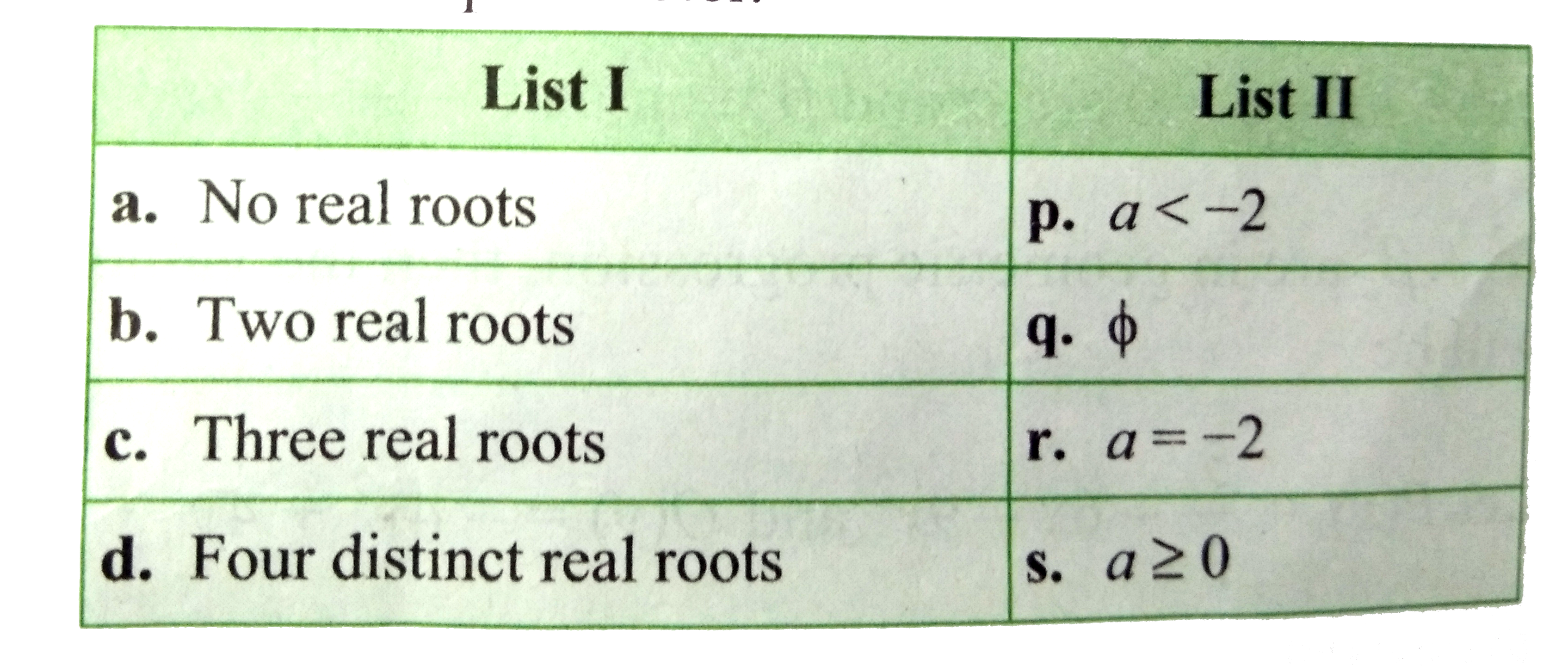If f(x) is a polynomial of degree 4 with rational coefficients
and touches x - axis at (√2,0) , then for the equation
f(x)=0, Solution in Bengali
It is given that f(x) touches x - axis at (√2,0) . So, two roots are
√2,√2.
since coefficients are rational, other roots must be sqrt(2), sqrt(2).
Topper's Solved these Questions
- BOOK - CENGAGE PUBLICATIONCHAPTER - THEORY OF EQUATIONSEXERCISE - Linked Comprechension Type37videos
THEORY OF EQUATIONS
- BOOK - CENGAGE PUBLICATIONCHAPTER - THEORY OF EQUATIONSEXERCISE - MATRIX MATCH TYPE6videos
THEORY OF EQUATIONS
- BOOK - CENGAGE PUBLICATIONCHAPTER - THEORY OF EQUATIONSEXERCISE - Single Correct Answer Type : Exercise89videos
THEORY OF EQUATIONS
- BOOK - CENGAGE PUBLICATIONCHAPTER - STRAIGHT LINESEXERCISE - ARCHIVES (NUMERICAL VALUE TYPE)1videos
STRAIGHT LINES
- BOOK - CENGAGE PUBLICATIONCHAPTER - THREE DIMENSIONAL GEOMETRYEXERCISE - All Questions291videos
THREE DIMENSIONAL GEOMETRY
Similar Questions
Consider an unknow polynomial which divided by (x−3) and (x−4) leaves remainder 2 and 1, respectively. Let R(x) be the remainder when this polynomial is divided by (x−3)(x−4).
If equations R(x)=x2+ax+1 has two distint real roots, then exhaustive values of a are.04:58View SolutionMatch the following for the equation x2+a|x|+1=0 where, a is a parameter.
 03:14View Solution
03:14View SolutionThe value of expression x4−8x3+18x2−8x+2 when x=2+√3
01:29View SolutionFor a point P in the plane, let d1(P)andd2(P) be the distances of the point P from the lines x−y=0andx+y=0 respectively. The area of the region R consisting of all points P lying in the first quadrant of the plane and satisfying 2≤d1(P)+d2(P)≤4, is
03:17View SolutionFind the angle between the line whose direction cosines are given by l+m+n=0andl2+m2−n2=0.
02:57View SolutionThe f(x) is a third degree polynomial such that f(0)=4 and Lt_(x rarr1)(f(x))/((x-1)^(2))=1 then f(x) is not divisible be
01:54View Solutionf(x) is polynomial of degree 4 with real coefficients such that f(x)=0 satisfied by x=1, 2, 3 only then f'(1)f'(2)f'(3) is equal to -
01:40View SolutionIf f(x) is a polynomial of degree 4 with rational coefficients
and touches x - axis at (√2,0) , then for the equation
f(x)=0,03:08View SolutionIf f(x) is a polynomial of degree 5 with real coefficients such that f(|x|)=0 has 8 real roots, then f(x)=0 has
View SolutionA polynomial of 6th degree f(x) satisfies f(x)=f(2−x),∀x∈R, if f(x)=0 has 4 distinct and 2 equal roots, then sum of the roots of f(x)=0 is
View SolutionIf f (x) is polynomial of degree two and f(0) =4 f'(0) =3,f''(0) =4,then f(-1) =
01:53View SolutionIf f (x) is a polynomial of degree two and f(0) =4 f'(0) =3,f'' (0) 4 then f(-1) =
02:10View SolutionIf f(x) is a polynomial of degree 2, such that f(0)=3,f'(0)=−7,f''(0)=8∫21f(x)dx=
05:56View SolutionIf f (x)= 0 be a polynomial whose coefficients are all and whose roots are all real, then degree of f (x) can be :
02:15View Solutionf(x) is a polynomial of degree three with rational co - efficients. If its graph touches the x - axis, then
02:08View SolutionIf f(x) is is a polynomial of degree n with rational coefficients and 1+2I,2−√3 and 5 are roots of f(x) =0 then the least value of n is
02:24View Solution

